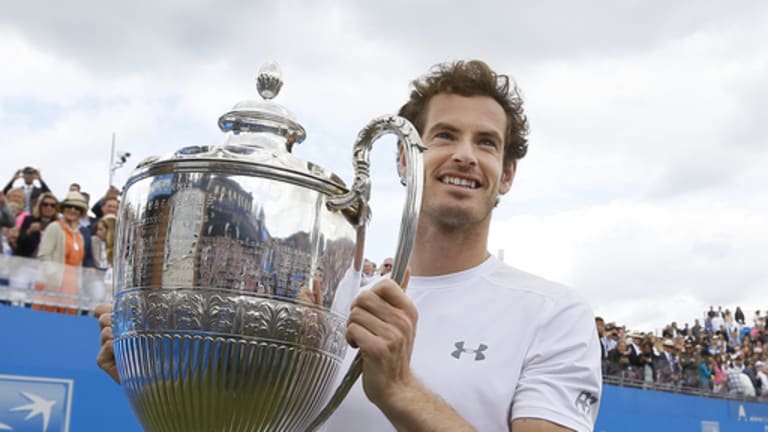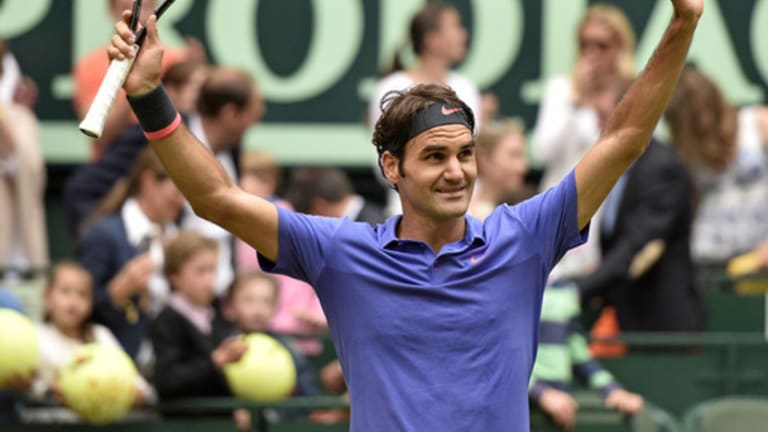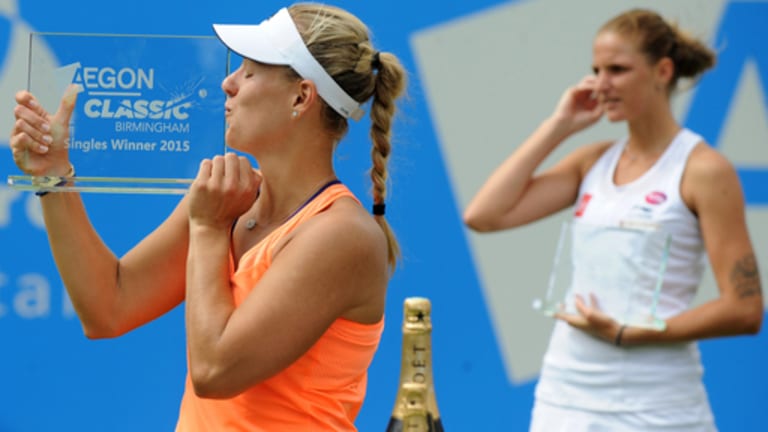The obvious theory would be that Andy Murray should always play two matches on the same day. Last month he took home the first clay title of his career, at a rain-drenched event in Munich, after winning two matches on Saturday. The following week in Madrid he had to do it again, after a match of his didn't begin until close to 1:00 in the morning. And on Sunday at Queen’s Club, Murray was on double duty yet again: In the morning he finished off Viktor Troicki, before coming back out to beat Kevin Anderson for the championship. Judging by the 6-3, 6-4 scores in the final, it was nothing more than a routine wind sprint in the park for the world No. 3.
Just don’t tell him that. When Murray was asked if winning the first match helped him warm up for the second, he shook his head.
“No, I don’t think so,” he said. “I mean, maybe when I was 21 or something...now it’s not as easy as it used to be, unfortunately.”
OK, perhaps Wimbledon’s schedulers shouldn’t try to make him play twice in a day.
The other obvious, and less impeachable, theory behind Murray’s win at Queen’s is that he really likes this tournament. It’s in his adopted hometown, he had won it three times before, he’s close friends with the director, Ross Hutchins, and everyone is there to root him on. What’s not to like?
The last time Murray won at Queen’s, in 2013, he went on to win at Wimbledon three weeks later. Yesterday, he was reminded of that fact. Murray responded by reminding us how little that fact means.
"That means nothing, really,” Murray said, as he shot down media theory No. 2 of the day. “... I think it has only happened six times where someone has won Queen’s and gone on to win [Wimbledon].”
Murray is right, of course; as we just saw at the French Open, Grand Slams take on a life of their own, and the results of the lead-up events can be quickly made to feel like ancient, irrelevant history. Plus, he didn’t beat anyone in the Top 15 at Queen’s.
But the week and the tournament have pushed him in the right direction. He said he found his grass-court form in his comeback win over Gilles Muller in the quarterfinals, and he played better from there. Just as important, Queen’s didn’t allow one of Murray's major Wimbledon competitors, Stan Wawrinka, to find his form on grass. Much to the relief of the rest of the ATP, the French Open champion looked human again in his early loss to Kevin Anderson.
“It’s a great start to my preparation on the grass,” Murray said. “It gives me that little bit of confidence going in [to Wimbledon].”
The theory that does hold up from Queen’s is that Murray is having a quietly excellent season. He's 41-6 on the year, has won three titles, and has reached the semis or better in seven of the 10 events he has entered. He’s 10-0 with new co-coach Jonas Bjorkmann, and he says the work he’s done with his other co-coach, Amelie Mauresmo, on using his variety more effectively is paying dividends. Now he just needs some help. Four of Murray’s losses in 2015 have come to Novak Djokovic; is there anyone out there who can knock the world No. 1 off for him?
It’s hard for a British tennis fan to ask for much more from Murray this year. But that’s exactly what’s about to happen.


